Modern psychological explanations

Medieval faculty psychology, as depicted in
Gregor Reisch, Margarita Philosophica (1504)

In a very real sense, demonology and witchcraft prosecutions were always about psychology, even though the word "psychology" - the doctrine of the soul - was not introduced until the seventeenth century. The study of the soul, based on Aristotle's De Anima, was an integral part of natural philosophy. The medieval writers supposed that talk of witches flying by night was prompted by a deranged imagination, and the relation of the soul to the Devil's wiles was always at the heart of later demonological writings. The issue between full-blown demonologists and moderate or extreme sceptics was, in part, about the role of the mind in producing the phenomena. Whereas the demonologists saw external action as producing mental events, the sceptics tended to see the deranged mind as producing bodily phenomena. Both sides were contesting within the framework of medical theories, whether Galenic or Paracelsian, that saw a very intimate connection between the passions of the mind and the state of the body. Equally, the popular accusations can be said to rest on certain folk psychological suppositions, about the effects of anger and other emotions, about the causes of mental distress, and about the likely motives of one's neighbours.
It is clear that, in ascribing psychological causation to witchcraft beliefs, whether on the part of accusers, confessing witches or demonologists, one is translating one psychological system into the language of another. All too often, this is seen as quite unproblematic. The complete applicability of the particular psychological system accepted by the modern writer, at the moment of writing, is taken for granted. It is seen as axiomatic that the system is universally true, rather than being the product of a specific set of modern circumstances. That is, of course, part of any such system's claim to "scientific" status. There is a belief in universal human characteristics across all times and cultures, especially among psychotherapists and general psychologists, as well as an assumption that one's own preferred system is the only valid one. It is unclear that such assumptions can be maintained, except by faith.
Another problem is that the rediagnosis of past witchcraft and possession cases has played a substantial role in the self-definition of psychology, psychiatry and psychoanalysis. Initially, this took the form of turning the people of the past, women, Catholics, and rural inhabitants, into an Other, to be patronized by "progressive" nineteenth-century men, who depicted themselves as the champions of "Science". This line of thought descends directly from those Enlightenment critics of popular superstition who described all confessions and accusations as "mere imaginings". Describing the work of historians of psychiatry such as Gregory Zilboorg, whose influence is still to be observed in textbooks, Thomas J. Schoeneman has written, "First, past actions (such as witchcraft confessions) that do not conform to present concepts of normality must be pathological. Second, past ideologies (such as demonology) that fail to match present scientific constructions of reality are sure indicators of ignorance, malice, or both."
 Many
early psychologists were content to denounce the history of witchcraft
beliefs as a catalogue of superstitions, as if the people of early modern
Europe (and by implication many of their own contemporaries) were strictly
comparable with the tribal peoples reported on by colonial administrators
and early ethnographers. "The whole history of witchcraft and early
medicine is a commentary on the facility with which anything which chances
to be conceived is believed the moment the belief chimes in with an emotional
mood. 'The cause of sickness?' When a savage asks the cause of anything
he means to ask exclusively 'What is to blame?' The theoretic curiosity
starts from the practical life's demands. Let some one then accuse a necromancer,
suggest a charm or spell which has been cast, and no more 'evidence' is
asked for. What evidence is required beyond this intimate sense of the
culprit's responsibility, to which our very viscera and limbs reply?"
William James,
The
Principles of Psychology (1890) p.310
Many
early psychologists were content to denounce the history of witchcraft
beliefs as a catalogue of superstitions, as if the people of early modern
Europe (and by implication many of their own contemporaries) were strictly
comparable with the tribal peoples reported on by colonial administrators
and early ethnographers. "The whole history of witchcraft and early
medicine is a commentary on the facility with which anything which chances
to be conceived is believed the moment the belief chimes in with an emotional
mood. 'The cause of sickness?' When a savage asks the cause of anything
he means to ask exclusively 'What is to blame?' The theoretic curiosity
starts from the practical life's demands. Let some one then accuse a necromancer,
suggest a charm or spell which has been cast, and no more 'evidence' is
asked for. What evidence is required beyond this intimate sense of the
culprit's responsibility, to which our very viscera and limbs reply?"
William James,
The
Principles of Psychology (1890) p.310
 In
France, which was seeing fierce conflicts between the Catholic Church and
secularists, there were attacks on contemporary Catholic exorcisms and
republications of early modern cases by psychiatrists. Jean-Martin
Charcot and his pupils rediagnosed the demonological material as evidence
of hysteria. Indeed, the way that Charcot manipulated and exhibited
his female patients resembled noting so much as the conduct of the more
theatrical exorcists. Dr. Paul Richer, in his Études Cliniques
sur la Grande Hystérie ou Hystéro-Épilepsie
(Paris,
1885), included images of hysterics at the Salpetrière in Paris
who presented all the traditional symptoms of demoniacs. The new
field of forensic psychiatry used such material to argue that many confessions
and accusations sprang from psychological disorders. For example,
Hugo Münsterberg, (On
the Witness Stand: Essays on Psychology and Crime, 1908/1925) used
the Salem material to provide classic examples of false confessions.
In
France, which was seeing fierce conflicts between the Catholic Church and
secularists, there were attacks on contemporary Catholic exorcisms and
republications of early modern cases by psychiatrists. Jean-Martin
Charcot and his pupils rediagnosed the demonological material as evidence
of hysteria. Indeed, the way that Charcot manipulated and exhibited
his female patients resembled noting so much as the conduct of the more
theatrical exorcists. Dr. Paul Richer, in his Études Cliniques
sur la Grande Hystérie ou Hystéro-Épilepsie
(Paris,
1885), included images of hysterics at the Salpetrière in Paris
who presented all the traditional symptoms of demoniacs. The new
field of forensic psychiatry used such material to argue that many confessions
and accusations sprang from psychological disorders. For example,
Hugo Münsterberg, (On
the Witness Stand: Essays on Psychology and Crime, 1908/1925) used
the Salem material to provide classic examples of false confessions.
Elsewhere in Europe, Carl Binz published on Johann Weyer,
whose work is said to have influenced Charcot's pupil Sigmund Freud, who
discussed a seventeenth-century case of possession, in a classic paper:
"What in those days were thought
to be evil spirits to us are base and evil wishes, the derivatives of impulses
which have been rejected and repressed. In one respect only we do not subscribe
to the explanation of these phenomena current in mediaeval times; we have
abandoned the projection of them into the outer world, attributing their
origin instead to the inner life of the patient in whom they manifest themselves.
("A Neurosis of Demoniacal Possession in the Seventeenth Century" [1923],
Collected
Papers 4:437; in volume 19 of the Standard Edition) Freud
internalized the demonic, turning what had been seen as an external alien
threat into seemingly alien unconscious forces, so that aspects of his
thought can be seen as more like the ideas of the sceptics and other aspects
like the theories of the demonologists.
 Meanwhile,
secularism and medcial materialism were challenged from a variety of directions,
not only by Catholic and Protestant traditionalists, who promoted a belief
in faith healing and demonic possession. Mary Baker Eddy, the founder
of Christian Science, was ascribing to mesmerism the powers formerly attributed
to witchcraft. In the movement's foundational text, Science and
Health (1875), she wrote, "In coming years the person or mind that
hates his neighbour will have no need to traverse his fields, to destroy
his docks and herds . . . for the evil mind will do this through mesmerism;
and not in propria persona be seen committing the deed." She
insisted that "Christian Science goes to the bottom of mental action, and
reveals the theodicy which indicates the rightness of all divine action,
as the emanation of divine Mind, and the consequent wrongness of the opposite
so-called action - evil, occultism, necromancy, mesmerism, animal magnetism,
hypnotism." Even some of her fiercest critics, such as Mark
Twain, were obliged to recognize the force of her connection between
mind and matter, making a link between modern faith-healing and phenomena
of the past, such as the royal touch. Others embraced the very phenomena
she reviled. Spiritualism had a large following among anti-materialists
of a scientific bent, such as Sir Arthur Conan Doyle, who also embraced
as genuine the celebrated Cottingley fairy photographs. Occultism
was entertained not only by eccentrics such as Aleister Crowley but also
by the poet W.B.Yeats. Theosophy, astrology, Rosicrucianism, Swedenborgianism,
these were only a few of the occult movements widespread in the late nineteenth
and early twentieth centuries.
Meanwhile,
secularism and medcial materialism were challenged from a variety of directions,
not only by Catholic and Protestant traditionalists, who promoted a belief
in faith healing and demonic possession. Mary Baker Eddy, the founder
of Christian Science, was ascribing to mesmerism the powers formerly attributed
to witchcraft. In the movement's foundational text, Science and
Health (1875), she wrote, "In coming years the person or mind that
hates his neighbour will have no need to traverse his fields, to destroy
his docks and herds . . . for the evil mind will do this through mesmerism;
and not in propria persona be seen committing the deed." She
insisted that "Christian Science goes to the bottom of mental action, and
reveals the theodicy which indicates the rightness of all divine action,
as the emanation of divine Mind, and the consequent wrongness of the opposite
so-called action - evil, occultism, necromancy, mesmerism, animal magnetism,
hypnotism." Even some of her fiercest critics, such as Mark
Twain, were obliged to recognize the force of her connection between
mind and matter, making a link between modern faith-healing and phenomena
of the past, such as the royal touch. Others embraced the very phenomena
she reviled. Spiritualism had a large following among anti-materialists
of a scientific bent, such as Sir Arthur Conan Doyle, who also embraced
as genuine the celebrated Cottingley fairy photographs. Occultism
was entertained not only by eccentrics such as Aleister Crowley but also
by the poet W.B.Yeats. Theosophy, astrology, Rosicrucianism, Swedenborgianism,
these were only a few of the occult movements widespread in the late nineteenth
and early twentieth centuries.
If we recognize this as the highly charged field into which psychoanalysis emerged, its hidden forces of the unconscious mind can be seen as secularized versions of the demonic and spiritual. The fascination of Freud's pupil Carl Jung with astrology and alchemy, as revealing spiritual and cultural universals, seems far less of an aberration. Thus, for all its scientific ambitions, psychoanalysis is perhaps too closely akin to demonology to view witchcraft phenomena as dispassionately as some would wish, but it may nevertheless have insights to supply, as long as historians handle it carefully. The crucial question, however, is whether the forces and motivations postulated by psychoanalysts on the basis of modern case material are human universals or merely local.
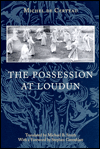 All
explanations of witchcraft prosecution and beliefs are psychological to
some extent. For example, the celebrated "English
stereotype" formulated by Keith Thomas and Alan Macfarlane, which sees
the transfer of guilt from the person who has refused to give alms onto
the person who has asked for help as central to English accusations, has
an implicit psychology at the heart of it, even though it was not framed
in such terms. Explanations of motivation and the understanding of
experience are unavoidable, although most historians use nothing more sophisticated
and self-conscious than their own unexamined folk psychology. Some
historians, however, have explicitly embraced a particular theory in order
to understand their case material. They have done this with varying
degrees of success. The only trained historian/psychoanalyst so far
has been the late Michel de Certeau, who wrote a compelling account of
the
possessions at Loudun. Most historians and literary critics have
had little more knowledge than can be acquired as readers or patients.
One might perhaps except John Putnam Demos and Robin Briggs, whose wives
are practitioners.
All
explanations of witchcraft prosecution and beliefs are psychological to
some extent. For example, the celebrated "English
stereotype" formulated by Keith Thomas and Alan Macfarlane, which sees
the transfer of guilt from the person who has refused to give alms onto
the person who has asked for help as central to English accusations, has
an implicit psychology at the heart of it, even though it was not framed
in such terms. Explanations of motivation and the understanding of
experience are unavoidable, although most historians use nothing more sophisticated
and self-conscious than their own unexamined folk psychology. Some
historians, however, have explicitly embraced a particular theory in order
to understand their case material. They have done this with varying
degrees of success. The only trained historian/psychoanalyst so far
has been the late Michel de Certeau, who wrote a compelling account of
the
possessions at Loudun. Most historians and literary critics have
had little more knowledge than can be acquired as readers or patients.
One might perhaps except John Putnam Demos and Robin Briggs, whose wives
are practitioners.
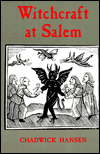
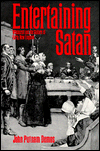
 In
his Witchcraft at Salem, Chadwick Hansen attempted to use Charcot's
doctrine of hysteria to explain the accusations of the afflicted women
at Salem in 1692. Although their evidence has attracted a great deal
of attention, it is not clear that such an explanation helps us to understand
the motives of the majority of accusers, who exhibited no extraordinary
symptoms. John Putnam Demos, in Entertaining Satan, applied
the developmental theory of Melanie Klein to the pre-Salem cases, arguing
that the character of Puritan childrearing was responsible for accusations.
This is far from nonsensical - Demos knows far too much about the archival
remains of New England for his argument to be easy to knock down - but
it remains unclear why some made accusations and others did not, in view
of the apparently widespread patterns he describes. The psychologist
Nicholas Spanos, in an exchange in the Journal of the History of the
Behavioral Sciences, suggested that Demos's social psychology was a
good deal more convincing than his attempts at depth psychoanalysis.
Bernard Rosenthal, a literary critic who has read the Salem depositions
very closely (although he seems to think they record trials), has dismissed
all such positions in his Salem Story. He knows that the afflicted
accusers were simply guilty of deceit. No complicated psychological
rationalizations are required for him, although his own position is, of
course, based on a psychology, that of original sin. David Harley,
in his essay "Explaining Salem: Calvinist psychology and the diagnosis
of possession" (American Historical Review 1996), has argued that
it is more important to listen to the psychological explanations employed
at the time, as these would be the concepts shaping behaviour and reactions
to it, than to rush towards a premature translation into modern terms or
to condemn accusers as deceitful.
In
his Witchcraft at Salem, Chadwick Hansen attempted to use Charcot's
doctrine of hysteria to explain the accusations of the afflicted women
at Salem in 1692. Although their evidence has attracted a great deal
of attention, it is not clear that such an explanation helps us to understand
the motives of the majority of accusers, who exhibited no extraordinary
symptoms. John Putnam Demos, in Entertaining Satan, applied
the developmental theory of Melanie Klein to the pre-Salem cases, arguing
that the character of Puritan childrearing was responsible for accusations.
This is far from nonsensical - Demos knows far too much about the archival
remains of New England for his argument to be easy to knock down - but
it remains unclear why some made accusations and others did not, in view
of the apparently widespread patterns he describes. The psychologist
Nicholas Spanos, in an exchange in the Journal of the History of the
Behavioral Sciences, suggested that Demos's social psychology was a
good deal more convincing than his attempts at depth psychoanalysis.
Bernard Rosenthal, a literary critic who has read the Salem depositions
very closely (although he seems to think they record trials), has dismissed
all such positions in his Salem Story. He knows that the afflicted
accusers were simply guilty of deceit. No complicated psychological
rationalizations are required for him, although his own position is, of
course, based on a psychology, that of original sin. David Harley,
in his essay "Explaining Salem: Calvinist psychology and the diagnosis
of possession" (American Historical Review 1996), has argued that
it is more important to listen to the psychological explanations employed
at the time, as these would be the concepts shaping behaviour and reactions
to it, than to rush towards a premature translation into modern terms or
to condemn accusers as deceitful.
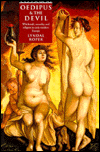
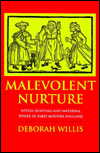
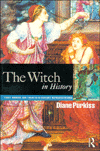 Some
feminist literary critics and historians have been more attracted to psychoanalytic
theory than Rosenthal has been. Lyndal Roper, in Oedipus and the
Devil, has applied Jungian theories, among others, to German case material
to examine the mental states of accusers and accused. Deborah Willis,
in Malevolent Nurture, has applied a slightly sentimental version
of Melanie Klein's ideas about the significance of the maternal breast
to a consideration of Anglo-Scottish cases, as well as James VI and dramatic
representations of witchcraft. Her theories often appear to be driving
her analysis of the material, especially in the case of James VI, whose
inconvenient moderation as King of England is simply ignored. Diane
Purkiss has paid more attention to some of the French feminist psychoanalytic
theorists, such as Julia Kristeva, and she has many interesting and stimulating
things to say, especially about personalities of accusers and accused in
the case material she has studied, although a reliance on published sources
rather weakens her argument.
Some
feminist literary critics and historians have been more attracted to psychoanalytic
theory than Rosenthal has been. Lyndal Roper, in Oedipus and the
Devil, has applied Jungian theories, among others, to German case material
to examine the mental states of accusers and accused. Deborah Willis,
in Malevolent Nurture, has applied a slightly sentimental version
of Melanie Klein's ideas about the significance of the maternal breast
to a consideration of Anglo-Scottish cases, as well as James VI and dramatic
representations of witchcraft. Her theories often appear to be driving
her analysis of the material, especially in the case of James VI, whose
inconvenient moderation as King of England is simply ignored. Diane
Purkiss has paid more attention to some of the French feminist psychoanalytic
theorists, such as Julia Kristeva, and she has many interesting and stimulating
things to say, especially about personalities of accusers and accused in
the case material she has studied, although a reliance on published sources
rather weakens her argument.
On the whole, it has to be said that a thought-through psychological position is probably more usable than an incoherent one. However, a strongly endorsed modern theory may well blinker the historian to the detail of the case material, because of the immediate translation of emotional terms into their supposed modern equivalents. It is probably best for historians to be aware of the current psychological literature, using it as a way to ask fresh questions, rather than embracing one particular theory enthusiastically. This needs to be balanced against a careful attention to the significance of contemporary terms, used to describe and shape emotional experiences. It is clear that historical psychology is at the heart of many witchcraft phenomena, but the force of the participants' theories needs to be recognized, before attempting to use fragmentary evidence to recreate the psychoanalytical experience. In general, what we have in trial literature is a description of social conduct and utterances. The historian is standing on shifting sands whenever trying to infer internal states from such evidence, and there is always a danger that the theory will supply too much, based only on modern cases.
Robin Briggs, in Communities of Belief, has cogently
remarked,
"No one can
enter the minds of the witch-hunters without allowing full value to their
libidinal drives or their tendency to prurience, and therefore the persecution
itself can only be understood if these elements are allowed for. Yet there
are enormous difficulties inherent in such an approach. Psychoanalysis
often seems the reverse of an exact science even in the contemporary world;
attempts to apply it to long-dead individuals have rarely carried conviction.
In the peculiar case of witchcraft we can claim to be dealing specifically
with fantasies, but their collective and syncretist nature forces us into
the particularly murky waters of group psychology. Above all, like nearly
all the general explanations ever advanced in the field, this one constantly
threatens to explain too much. If the persecution fits so beautifully into
an interpretation of the Zeitgeist, based on the repression of libidinal
instinct, why then was it so limited in time and space, why were the numbers
involved so relatively small, and why were there such divisions among the
élites about the reasonableness of the whole enterprise?"
N.P. Spanos, "Witchcraft in histories of psychiatry: A critical analysis and an alternative conceptualization", Psychological Bulletin 85 (1978) 417-439
N.P.Spanos and J.Gottlieb, "Demonic possession, mesmerism, and hysteria: A social psychological perspective on their historical interrelations", Journal of Abnormal Psychology 88 (1979) 527-546
Patrick Vandermeersch, "The victory of psychiatry over demonology: the origin of the nineteenth-century myth", History of Psychiatry 2 (1991): 351-363
Gregory Zilboorg, The Medical Man and the Witch during the Renaissance (Baltimore, 1969)
Sally Hill and Jean M. Goodwin, "Freud's notes on a seventeenth-century case of demonic possession: understanding the uses of exorcism", in Rediscovering Childhood Trauma: historical casebook and clinical applications, ed. J.M. Goodwin (Washington, D.C., 1993) 45-63 RC 569.5 .C55 R43 1993
Thomas J. Schoeneman, "Criticisms of the Psychopathological Interpretation of Witch Hunts: A Review", American Journal of Psychiatry 139 (1982) 1028-1032
Thomas J. Schoeneman, "The role of mental illness in the European witch hunts of the sixteenth and seventeenth centuries: An assessment", Journal of the History of the Behavioral Sciences 13 (1977) 337-351.